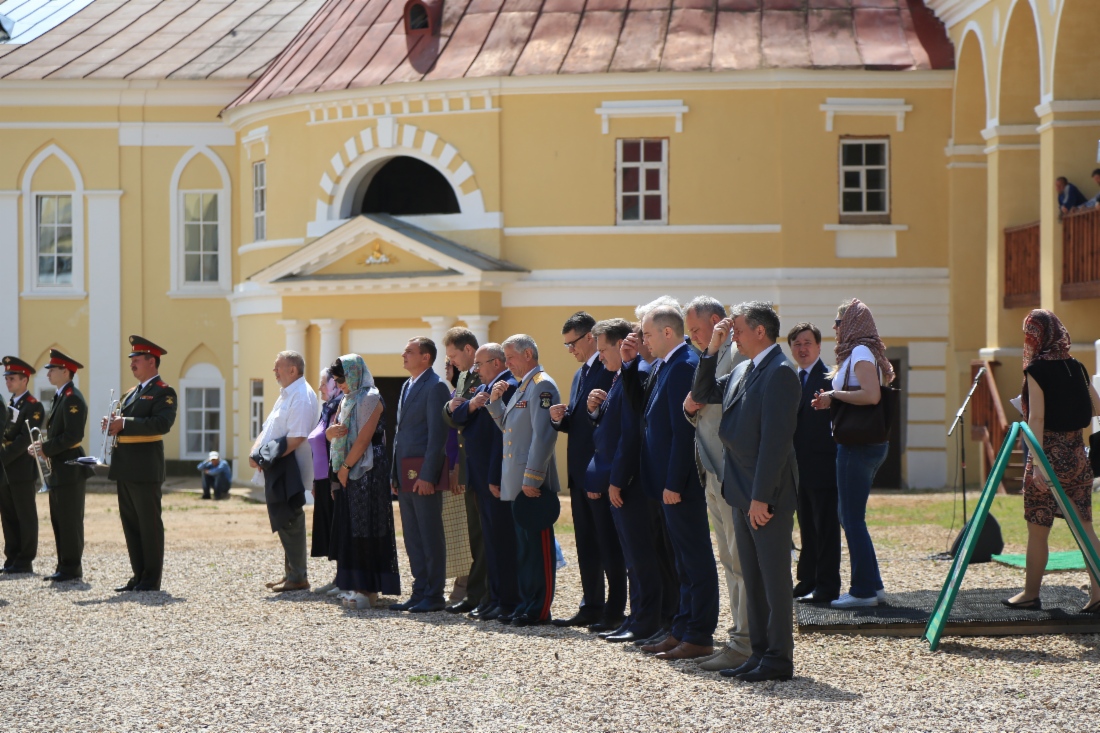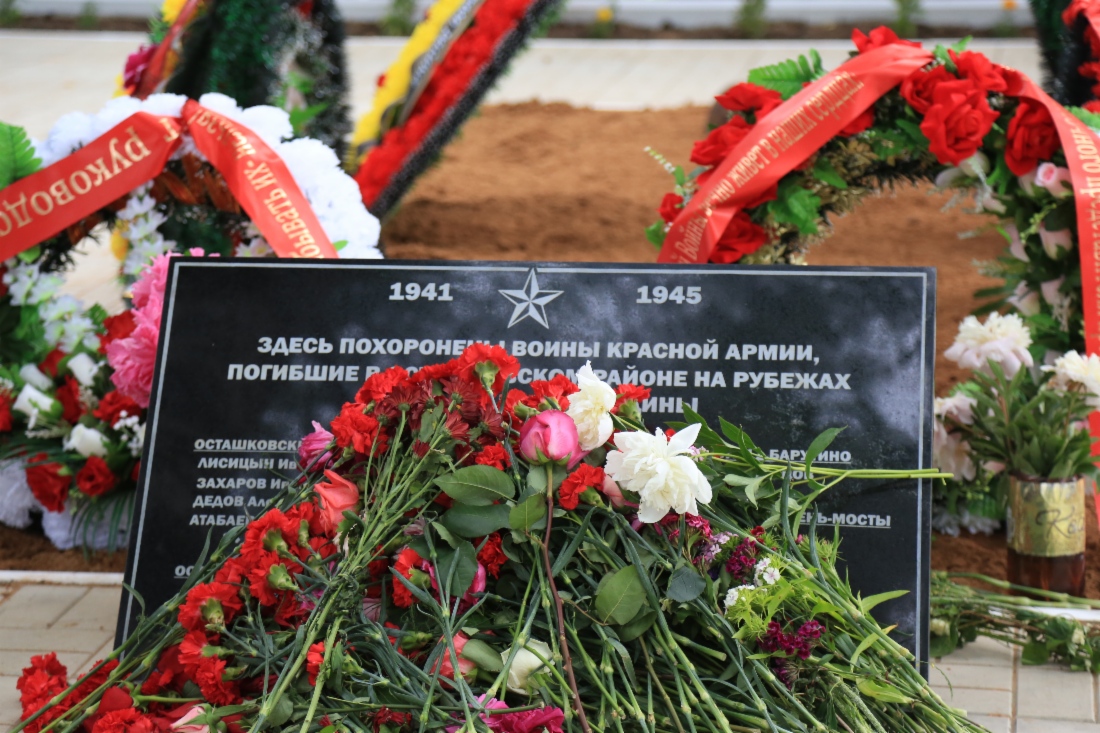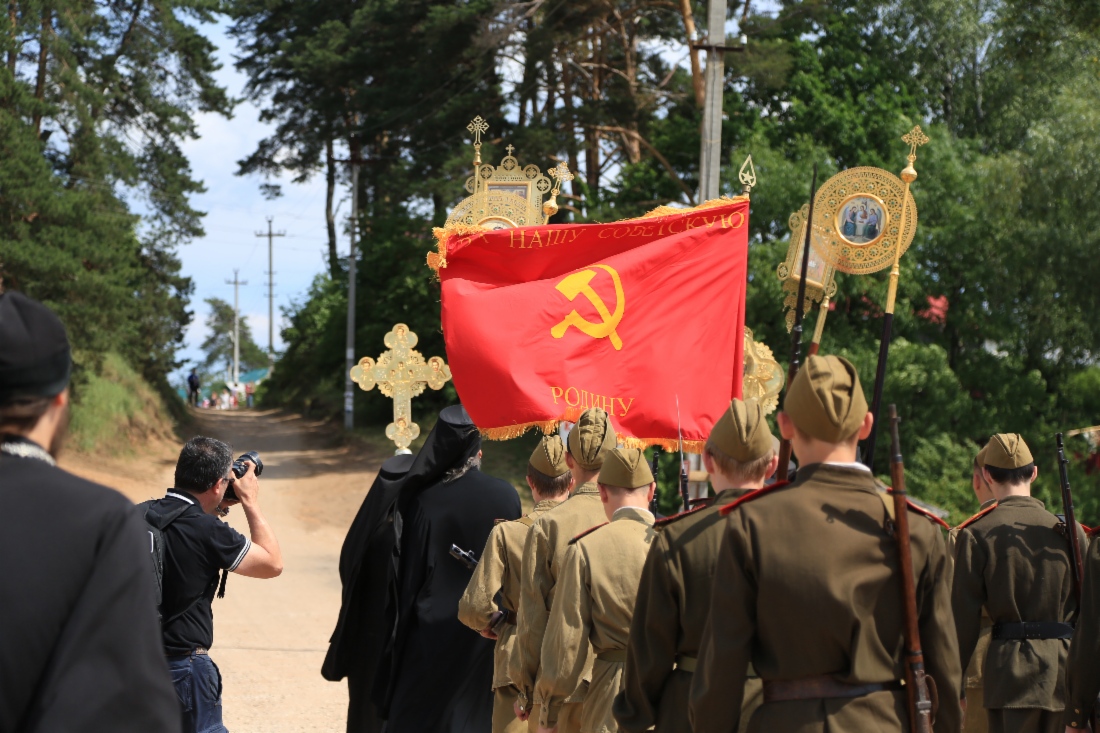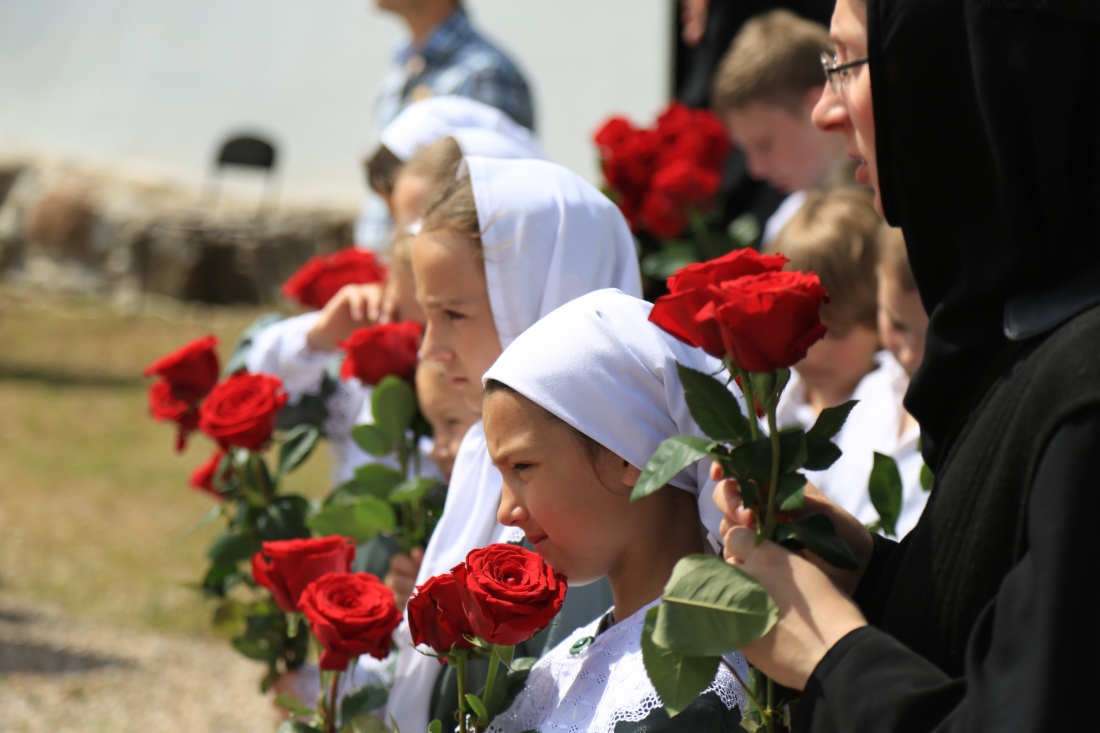‘Memory Watch 2015’ of Gazprom Transgaz Moscow ends in Tver Region
RELEASE
News from projects and regions
On June 24, 2015 the ‘Memory Watch 2015’ historical and patriotic campaign of Gazprom Transgaz Moscow that took place in the Ostashkov District, Tver Region, at Lake Seliger, came to an end.
Throughout April young specialists of Gazprom Transgaz Moscow and volunteers of the ‘Search’ local searching group were exhuming the remains of Soviet soldiers buried in the Tver Region, in the places of fierce combats waged there during the Great Patriotic War. All in all, the remains of 63 Soviet soldiers were exhumed.
During a funeral ceremony timed to coincide with Remembrance and Mourning Day, a funeral service was held over the remains of the 63 fallen servicemen and officers at the Nilov Monastery (Stolobny Island,Lake Seliger), and after that they were reburied with solemn rituals in a common grave near the Svetlitsa settlement, Tver Region.
Speaking at the ceremony, Sergey Marchenko, Deputy Director General of Gazprom Transgaz Moscow, emphasized the importance of ‘Memory Watch 2015’ at Seliger for the employees of Gazprom Transgaz Moscow, a company founded in the year of the Great Victory and operating now in Russian regions where a few famous battles took place during the Great Patriotic War, such as the Battle of Moscow, the Yelets, Oryol and Ostrogozhsk—Rossosh Offensives, and the Battle of Prokhorovka.
Tver diocese Metropolitan Viktor addressed the attendees and called on everyone present there to keep and hand down from generation to generation the sacred memory of the heroic deed of the warriors who had given their lives for the love to compatriots in the fields of the Great Patriotic War. Closing the public gathering, Anatoly Lukashov, deputy leader of the ‘Search’ military-patriotic group also involved in academic and historical research, called on all the participants to continue taking part in Memory Watches, because, as he put it, “a war is not over until the last soldier is properly buried.”


Sergey Marchenko, Deputy Director General for Automation and Communications, Gazprom Transgaz Moscow and Vadim Shcherbakov, Chairman of United Trade Union Organization lead event. List of official invitees includes Yury Streletsky, Chief Federal Inspector in Tver Region, Administration of Presidential Plenipotentiary Representative in Central Federal District; Lieutenant General Valery Khalilov, Chief Bandmaster of Russian Federation, People’s Artist of Russia; Natalya Moiseyeva, Chairperson of Committee for Young People, Tver Region; Mikhail Tuzov, Administration Head in Ostashkov District
A memorial stone with the names of the combatants laid to rest was put on the common grave, and wreaths were placed there as well.
Background
Gazprom Transgaz Moscow is a 100 per cent subsidiary of Gazprom. It ensures gas supply to consumers in 14 regions of the European part of Russia, as well as natural gas transit within and beyond the former Soviet Union (FSU). The company operates over 21,000 kilometers of trunklines in the areas of its operations. Every year the company conveys nearly 170 billion cubic meters of gas.
The company has 25 branch offices, including 17 line pipe operation centers, 23 compressor workshops, 278 gas compressor units, 724 gas distribution stations and dispatch & control centers, 23 CNG filling stations.
The company has implemented an environmental management system in compliance with ISO 14001:2004. Its headcount is approximately 13,000 people. The company’s head office is based in Moscow.
In January 1942 the Ostashkov District, Tver Region, was the ground of the historic Toropets—Kholm Offensive conducted by the Soviet troops of the North-Western Front. It disrupted the operational coordination between the two German Army Groups, ‘North’ and ‘Center’, and contributed to the subsequent defeat of the Nazi troops in the Battle of Rzhev and afterwards in the Battle of Moscow.
During the hostilities that took place in the course of the Toropets—Kholm Offensive, Soviet troops lost about 30,000 people, and remnants of more than 10,000 people were lost irreparably.













